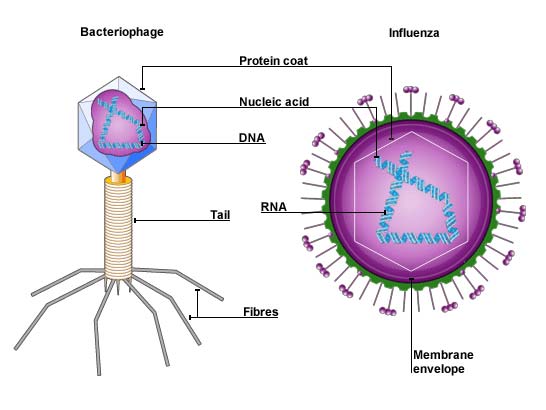Viruses
11SCI - Microbes
Finn Le Sueur
2024
Viruses Brainstorm
Structure of Viruses

- Glue the diagram into the centre of a page
- We will make notes around the outside
- A bacteriophage is a virus that infects bacteria, specifically
- Other viruses infect normal body (somatic) cells
Movement
- Viruses cannot move of their own free will
- They rely on their host to move them around
- Movement of fluid, air currents, etc.

Respiration

- Viruses do not do aerobic or anaerobic respiration
- They do not metabolize food to release energy
Sensitivity
- Viruses are somewhat sensitive to their environment
- Their replication can be slowed or stopped through controlling temperature, for example

Growth

- Viruses do not produce their own proteins
- They rely on a host cell to do that work for them
Reproduction
- Viruses do not perform binary fission or any other type of reproduction
- They infect a host cell with their own DNA or RNA
- This genetic material hijacks the cell, causing it to build more viruses
- The host cell then dies

Excretion

- Viruses do not perform excretion, as they do not do respiration
- Therefore, they do not have any byproducts to excrete
Nutrition
- Viruses do not do nutrition, because they have no need for food
- They do not need food because they do not do respiration (for growth and reproduction)

Ngohe / Task
- Use your device to research the purpose of the
cellular structures that we did not discuss:
- Protein coat
- Tail
- Fibres
- Membrane envelope